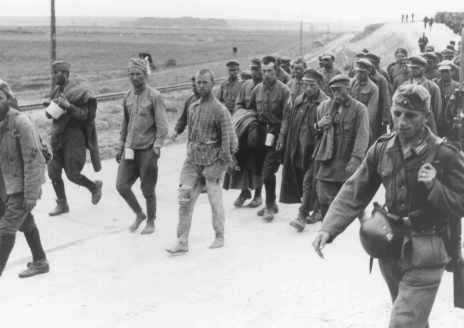Article 58 of the Criminal Code of many law-abiding citizens of the RSFSR ruined their lives. At least four million political prisoners in the Stalin era met with a kind of concentration camps - the Gulag. I must say that most of them did not conduct counter-revolutionary activities. However, even minor “misconducts” such as a negative assessment of a politician were considered to be it.
The writer Alexander Solzhenitsyn was one of those who met with the harsh fifty-eighth article. He was accused of “counteraction” by letters that he sent from the front to his friends and relatives. They often contained hidden criticism of Stalin, whom A. S. called "godfather." Naturally, censorship could not miss such letters. Moreover, she seriously became interested in them. Soviet counterintelligence arrested a freethinker. As a result, he lost the rank of captain, received 8 years of
correctional labor without the right to return from exile. It was he who decided to open the veil over part of the Stalinist punitive system by writing the immortal book “The Gulag Archipelago”. Let’s figure out what is the meaning of its name and what is the content.
The Gulag Archipelago is a system that connected thousands of Soviet penitentiary institutions. A considerable, and according to some reports, most of the prisoners of this huge punitive monster are political prisoners. As Solzhenitsyn himself wrote, many of them, even at the stage of their arrest, cherished the vain dream that their case would be carefully considered and that the charges against them would be dropped. And with difficulty they believed such representations, having already fallen into places not so distant.

“Political arrests were distinguished by the fact that people were taken innocent and unable to resist,” Solzhenitsyn noted. The author described several of the largest flows of prisoners: victims of dispossession (1929-1930), victims of the repressions of 1937, as well as those who were in German captivity (1944-1946). The Gulag archipelago hospitably opened its gates to wealthy peasants, priests and in general believers, intellectuals, professors. Only the fact of the existence of plans for the total number of prisoners (which are most often expressed in round numbers) speaks of the injustice of the Stalinist punitive machine. Naturally, the "enkavadists" zealously exceeded them.
Torture
A considerable part of Solzhenitsyn’s book is devoted to this question: why did those arrested almost always in those terrible years signed “confessions”, even if their guilt did not exist? The answer will truly not leave the reader indifferent. The author lists the inhuman torture that was used in the "organs". The list is incredibly wide - from a simple belief in a conversation to injuring the genitals. Here you can also mention sleep deprivation for several days, knocking out teeth, torture by fire ... The author, realizing the whole essence of the infernal Stalinist machine, asks the reader not to judge those who, without enduring torture, agreed with everything that they had been charged with. But there was something worse than self-incrimination. For the rest of their lives, they were tormented by remorse by those who, unable to bear it, slandered their best friends or relatives. At the same time, there were also very courageous individuals who did not sign anything.
The power and influence of the "enkavadists"
Employees were often true careerists. Statistics of "crime detection" promised them new ranks, higher salaries. Using their power, security officers often allowed themselves to take away the apartments they liked and the women they liked. Workers of the "security agencies" could easily remove their enemies from the road. But they themselves were involved in a dangerous game. None of them were insured against charges of betrayal, sabotage, espionage. Describing this system, Solzhenitsyn dreamed of a real, fair trial.
Life in prisonThe author of the book “The Gulag Archipelago” spoke about all the vicissitudes of the conclusion. In every cell there was supposed to be a snitch. However, prisoners quickly learned to distinguish between such people. This circumstance led to the secrecy of the inhabitants of the cells. The whole diet of prisoners is balanda, brown bread and boiling water. Of the pleasures and petty joys were chess, a walk, reading books. Solzhenitsyn’s book “The Gulag Archipelago” reveals to the reader the features of all categories of prisoners - from “fists” to “thieves”. It also describes the relationship between cellmates, sometimes difficult.
However, Solzhenitsyn wrote not only about life in prison. The Gulag Archipelago is also a work that sets out the history of the legislation of the RSFSR. The author consistently compared the system of Soviet justice and justice with a child when it was still undeveloped (1917-1918); with a young man (1919-1921) and with a mature man, while laying out a lot of interesting details.